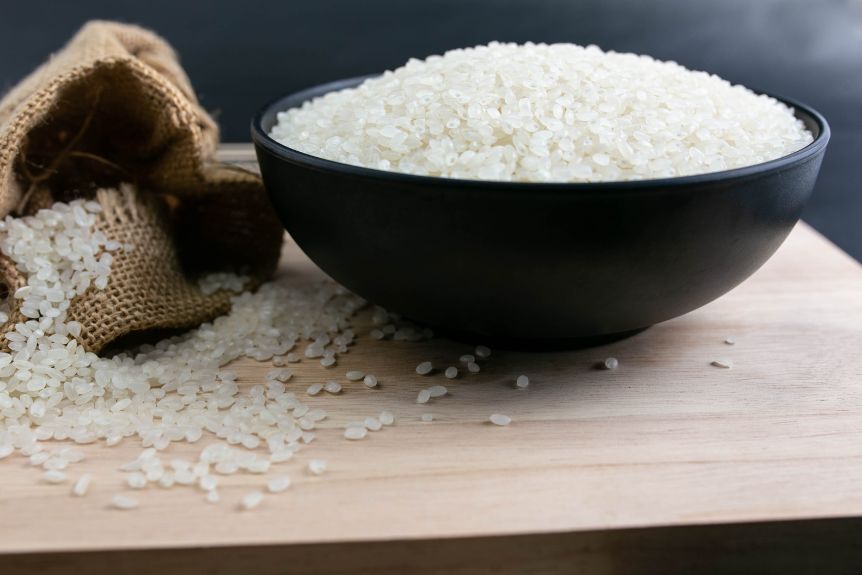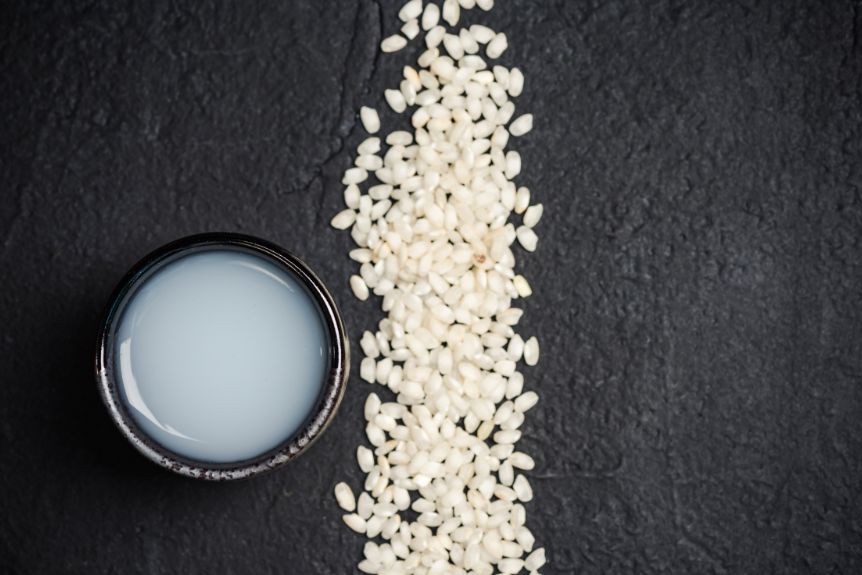Welcome to the delightful world of Japanese rice varieties, where every grain tells a story. Explore this rich collection of flavors and textures, and discover that Japanese rice is far more than just a basic staple.
It’s a vibrant reflection of Japan’s deep cultural traditions, with each type bringing its own special qualities and history, perfected over generations.
From the revered Koshihikari, with its delicate flavor and tender texture, to the distinctively charming Akitakomachi, each variety has its own secrets to share.
Sasanishiki, with its captivating charm, invites you to explore its subtle complexities, while Hinohikari demonstrates its impressive flexibility in a variety of dishes. Don’t overlook Mochigome, the rice that turns into delightful sticky sweets, enhancing every bite with a hint of sweetness.
In this article, we will embark on a captivating journey that will take us deep into the heart of each rice variety. We will explore the nuances of their flavors, the textures that dance on the palate, and the unique cooking qualities that make them so sought after.
But be warned, this is just the beginning, a mere glimpse into the vast selection of Japanese rice varieties that await your discovery.
So join us as we discuss the fascinating world of Japanese rice, where tradition and innovation intertwine to create a culinary experience like no other.
Get ready to have your taste buds tantalized, your senses awakened, and your understanding of this humble grain forever transformed. Are you ready to embark on this extraordinary journey? Then read on and let the magic of Japanese rice unfold before your eyes.
Japanese Rice Varieties
Koshihikari: Renowned for its perfect texture and flavor, often used in high-end sushi and satisfying simple rice dishes.
Akitakomachi: Favored for its sweet taste and excellent texture, ideal for sticky rice dishes.
Sasanishiki: Known for its unique aroma and texture, it is great for sushi and onigiri, offering a slightly sticky yet smooth consistency.
Hinohikari: This versatile rice adapts well to various dishes, known for its sticky consistency and sweet, chewy texture, enhancing everything from sushi to bento boxes.
Mochigome: Essential for traditional Japanese sweets like mochi, it is celebrated for its sticky texture and plays a crucial role in festive and culinary traditions.
Now let’s dig deeper into each rice variety in the following sections.

The Koshihikari Legacy
Since its introduction in 1956, Koshihikari has set the gold standard for premium Japanese rice, captivating chefs and diners alike with its impeccable texture and flavor. You’ve likely encountered its unmatched quality in high-end sushi or a simple, yet profoundly satisfying bowl of steamed rice.
Its reputation isn’t happenstance; it’s the result of meticulous cultivation techniques and a relentless pursuit of perfection.
You hold the power to elevate your culinary creations by choosing Koshihikari. It’s not just about selecting a type of rice; it’s about embracing a legacy of excellence. With each grain, you’re tapping into a tradition that has refined the art of rice production to its zenith.
This variety’s superior stickiness and sweetness make it the ideal canvas for your culinary masterpieces, whether you’re aiming to impress with your sushi skills or elevate a humble rice dish.
Unveiling Akitakomachi
While Koshihikari reigns supreme in the realm of Japanese rice, let’s explore another gem, Akitakomachi, known for its distinct qualities and flavorful charm.
Originating from Akita Prefecture, Akitakomachi stands out with its slightly sweet taste and excellent texture, making it a favorite among chefs and households alike. You’ll find its shorter, plumper grains appealing, especially if you’re aiming for dishes that demand rice with a stickier consistency.
Diving deeper, Akitakomachi’s cultivation requires meticulous attention, aligning with your desire for control over quality. Its adaptability to cold climates doesn’t compromise its flavor or texture, ensuring you get a premium product year-round.
This variety thrives in specific conditions that Akita Prefecture generously provides, highlighting the importance of geographical influence on rice quality.
Incorporating Akitakomachi into your culinary repertoire allows for a robust exploration of Japanese cuisine. Its ability to hold flavors makes it an excellent choice for sushi, onigiri, and even as a stand-alone side dish.
As you venture into the world of Akitakomachi, you’re not just adding another rice variety to your pantry; you’re embracing a tradition that offers you control over your culinary creations with its unmatched quality and versatility.
Sasanishiki’s Distinct Charm
Diving into the world of Japanese rice, you’ll find Sasanishiki captivating with its unique blend of aroma and texture. This variety, perfect for those who demand the best in their culinary experiences, offers a distinct charm that sets it apart from others.
You’re in control when it comes to choosing a rice that complements your dishes, and Sasanishiki stands out as a prime candidate.
Prized for its slightly sticky yet smooth consistency, Sasanishiki ensures your sushi and onigiri maintain their shape without compromising on taste.
Its subtle sweetness enhances the flavor profile of your meals, making it an indispensable ally in your kitchen. You’ll appreciate its versatility, as it performs exceptionally well in both traditional and modern Japanese dishes.
Moreover, Sasanishiki’s resilience in retaining its texture and flavor after cooling makes it an excellent choice for bento lunches. You can rest assured that your carefully prepared meals will be just as enjoyable hours later.
Embrace the control you have in elevating your culinary creations by incorporating Sasanishiki rice. Its distinct charm lies not just in its taste and texture but in its ability to transform your dishes into memorable experiences.
The Versatile Hinohikari
Hinohikari rice, with its versatility, can easily become the star of your culinary repertoire, adapting seamlessly to a wide range of Japanese dishes.
Originating from the lush fields of Japan, this variety brings a unique blend of flavors and textures that elevate your cooking. You’ve got the power to transform your meals, making each dish exceptionally flavorful and memorable.
When you’re aiming for that perfect sushi, Hinohikari’s sticky consistency ensures your rolls are tight and well-formed. It’s not just about sticking together; it’s about creating a base that complements the freshness of your fish and the sharpness of your wasabi.
But don’t stop there. Hinohikari’s adaptability shines in everything from comforting bowls of steaming rice to intricate, layered bento boxes.
Its natural sweetness and slightly chewy texture make it an ideal candidate for your culinary experiments. Whether you’re simmering a pot of heartwarming miso soup or crafting the perfect onigiri, Hinohikari rice holds its shape and flavor, ensuring your dishes are always a step above.
Embrace Hinohikari in your kitchen. You’ll not only master the art of Japanese cooking but also delight in the versatility and control it brings to your culinary creations.
Discovering Mochigome
Uncover the unique qualities of Mochigome, a cherished Japanese rice variety known for its sticky texture and pivotal role in traditional sweets and celebrations.
This short-grain rice isn’t just any staple; it’s the backbone of mochi, a traditional Japanese treat you’ve likely indulged in or heard about. Mochigome’s high starch content is what gifts it with that signature stickiness, making it unrivaled for creating dishes where cohesion is key.
Diving into the cultivation of Mochigome, you’ll find it’s a process demanding precision. This rice variety thrives in specific conditions, requiring attentiveness and a controlled environment to flourish. It’s your understanding of these cultivation techniques that ensures a successful harvest, empowering you to take charge from planting to plate.
Incorporating Mochigome into your culinary repertoire opens up a world of creativity. Beyond mochi, its versatility shines in savory dishes, soups, and even as a thickening agent, offering you a unique tool to elevate your cooking.
Mastering Mochigome not only broadens your culinary skills but also brings a piece of Japanese tradition into your kitchen, allowing you to craft authentic, memorable dishes that stand out.
Take control, and let Mochigome inspire your next culinary adventure.

Conclusion
You’ve just explored the rich world of Japanese rice, from the popular Koshihikari to the superb Akitakomachi. You’ve discovered the distinctive charm of Sasanishiki and the adaptability of Hinohikari.
And let’s not overlook Mochigome, essential for making delicious traditional sweets. Each type of rice offers a unique story, taste, and texture all its own.
But hey, have you ever wondered if all the hype around Japanese rice is justified? Some people argue that other varieties from different countries can rival the taste and quality of Japanese rice.
What do you think? Have you tasted rice from other regions that can give Japanese rice a run for its money?
We would love to hear your thoughts and experiences! Leave a comment below and let’s know if you agree or disagree with the notion that Japanese rice is the ultimate rice variety.
And who knows, maybe you’ll discover a new rice variety that will surprise and delight your taste buds!




Konnichiwa! (Hello!) I'm Pat Tokuyama, a Japanese tofu cookbook author, who travels for music, food, and adventure. If you like Japanese tea, checkout some of the newestorganic japanese tea, matcha bowls and noren and more!
** Curious about the Plant Based Japanese Cooking Club? ** Learn more here!